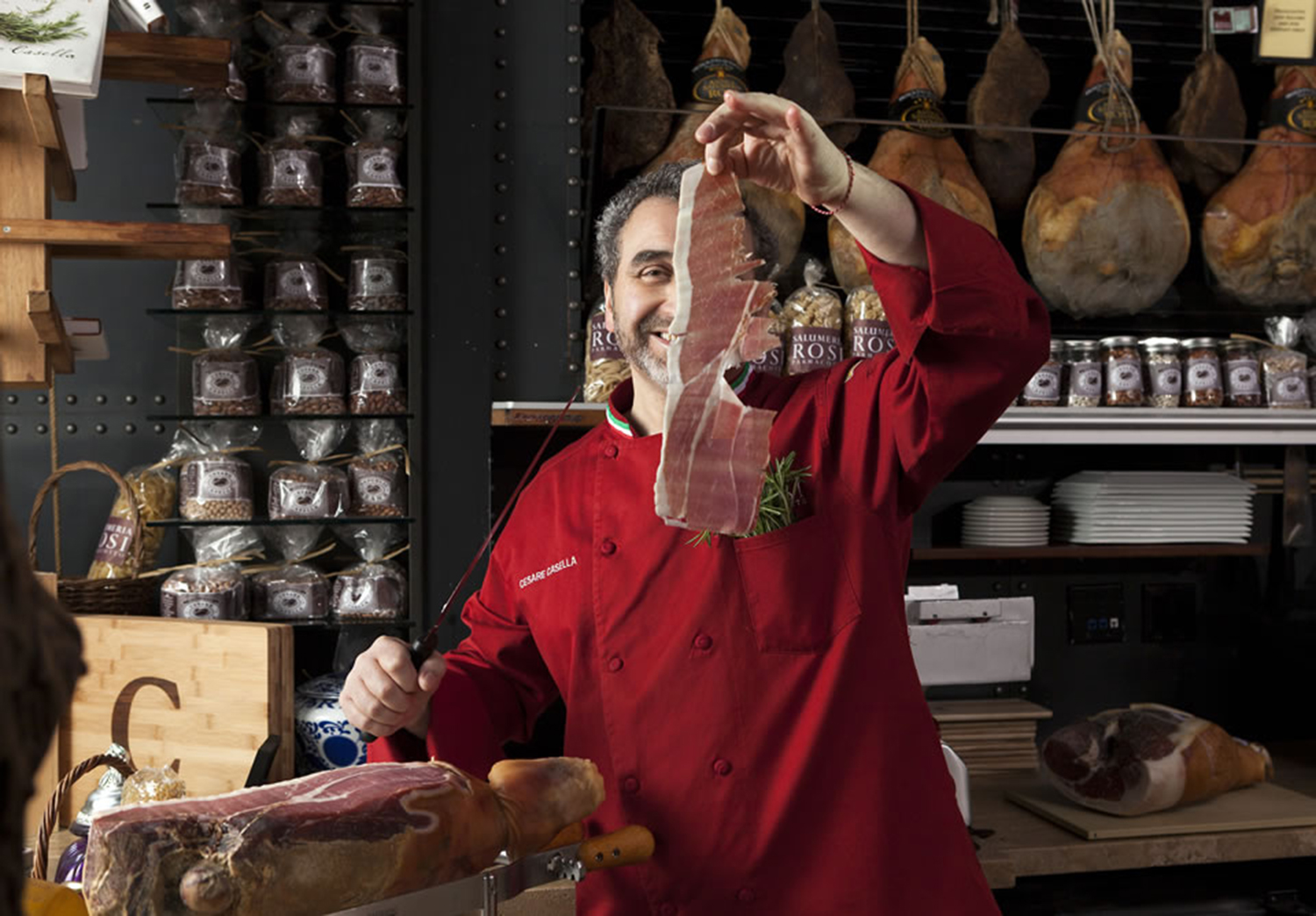When it comes to gastronomy, Italy has contributed much to the epicurean landscape, most notably pasta, gelato and cheese. Luckily for charcuterie fans, the region’s cured meats—especially prosciutto—are stealing the spotlight in the United States. Imports of this specialty item are at an all-time high; rare types (like those from Tuscany) are available stateside for the first time due to new Food and Drug Administration approvals; and the ingredient is innovatively incorporated into restaurant dishes.
Prosciutto (which translates simply to ham in Italian), or, more correctly, “prosciutto crudo” (the preserved, uncooked type we usually think of), is a protected designation in Italy, similar to appellations of wine. Largely produced in the central and northern regions, the ham—which is the hind leg or thigh meat—is hand-rubbed with salt and sometimes herbs or chili for a rustic taste, then rinsed and hung to dry in a cool, well-ventilated space for more than a year during the curing process. One of the most popular and well-known types, prosciutto di Parma, which comes from the same region as Parmesan cheese, can take up to three years to make. By the time the drying process is complete, the ham has lost more than a quarter of its weight in moisture, which concentrates the flavor in the meat.
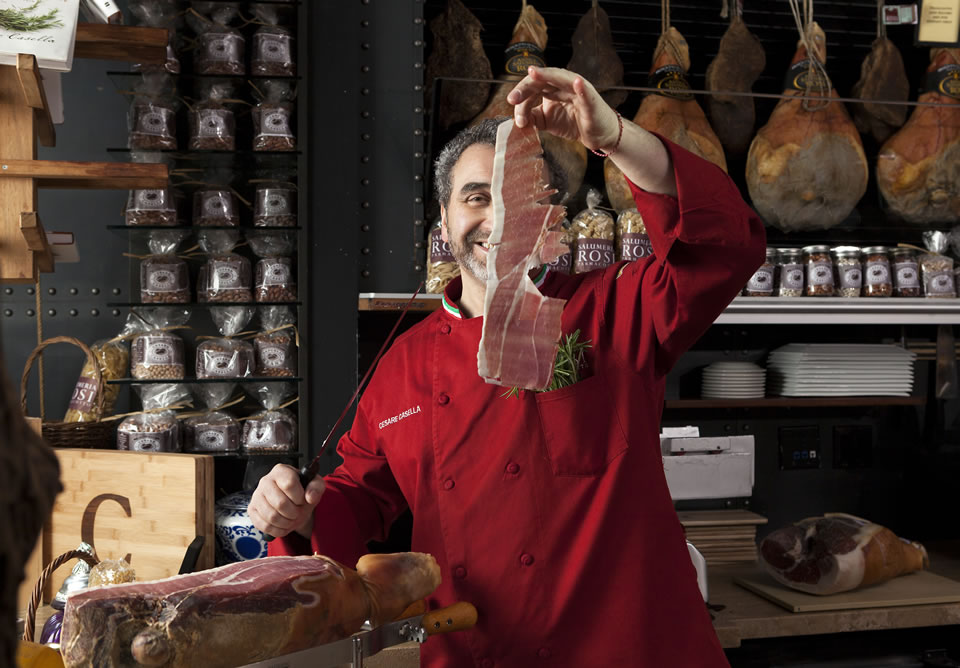
According to Fabrizio Concordati, sommelier and in-house prosciutto expert at the Boccondivino restaurant in Milan, curing pork in Italy originated as far back as the Roman times. A surgery school that was located in a town called Alta Val Nerina in central Italy, with close proximity to the pigs raised for the cured ham, helped establish the practice of slicing it very thin.
Of course, other countries have become experts of its production, including Spain, France and the United States. At Coalfire Pizza in Chicago, owner Dave Bonomi sources everything domestically, including La Quercia prosciutto from Iowa. “Some people say Parma is more buttery,” he says. “But La Quercia is arguably the best prosciutto made in the United States, and I think it’s better than what you can get in Naples. You don’t have to go to Europe to get the ingredient necessarily.”
Perhaps being less purist about the delicacy is also the reason American chefs are able to be so innovative, cooking it in ways that Italians might be hesitant to. “In Italy, you can incorporate prosciutto everywhere in your dinner,” Concordati says. “As an appetizer, we eat it plainly sliced or on bread. … As a main course, we eat it in pasta like stuffed tortellini, and on pizza, and there’s even a chef making prosciutto ice cream here. In the United States, chefs are using it with vegetables, protein and even more so with sweets. … Probably because they know that a good prosciutto will improve any dish.”
To Start
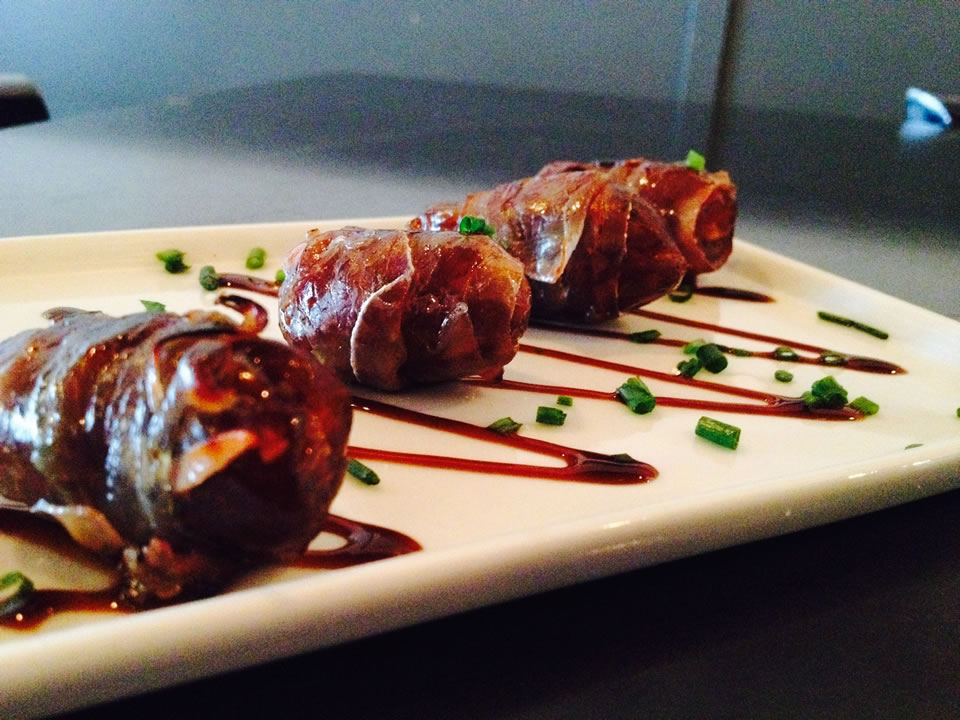
As an appetizer, it’s difficult to think of anything that will get mouths watering better than a thinly sliced, salty piece of meat. Restaurants are no stranger to the concept, and offer everything from classic charcuterie boards to innovative starters like stuffed rolls, as well as fruit, vegetables and seafood wrapped in thin slices.
Some chefs are capitalizing on the emerging trend and are devoted almost exclusively to cured meat, like Hog & Rocks in the Mission District of San Francisco, which serves various hams and oysters alongside expertly made cocktails. Owner and Executive Chef Scott Youkilis recommends pairing it with Lambrusco wine and other high-acid, lighter-bodied reds. “Traditionally, it’s perfect for prosciutto and other cured meats,” he says.
At Vintage Enoteca in Los Angeles, the wrapped Medjool dates are one of the most popular items on the menu. The fruit is packed with a mix of Fresno pepper and manchego and goat cheeses before being swathed in meaty layers then baked. “For prosciutto lovers, it’s the combination of salty and sweet that’s appealing in the dish,” says co-owner Jennifer Moore. “When it’s cooked, the two flavors highlight each other and balance each other, while the pepper gives it a little bit of a kick.” She says that lately customers prefer to start their meal with a decadent dish and seem to be drawn to cultural foods more than ever before.
The ham is also served raw, or sometimes fried, as a topping on soups and salads. Cesare Casella, executive chef and partner at Salumeria Rosi Parmacotto in New York, says an easy way to incorporate it into starter dishes like a salad is by crisping the meat and crumbling it into small pieces instead of using bacon bits for a salty crunch. Casella’s soups also experiment with the meat: The carbonara comes with an organic egg poached in a chicken Grana Padano broth, served with croutons, chives and a prosciutto chip.
To Savor
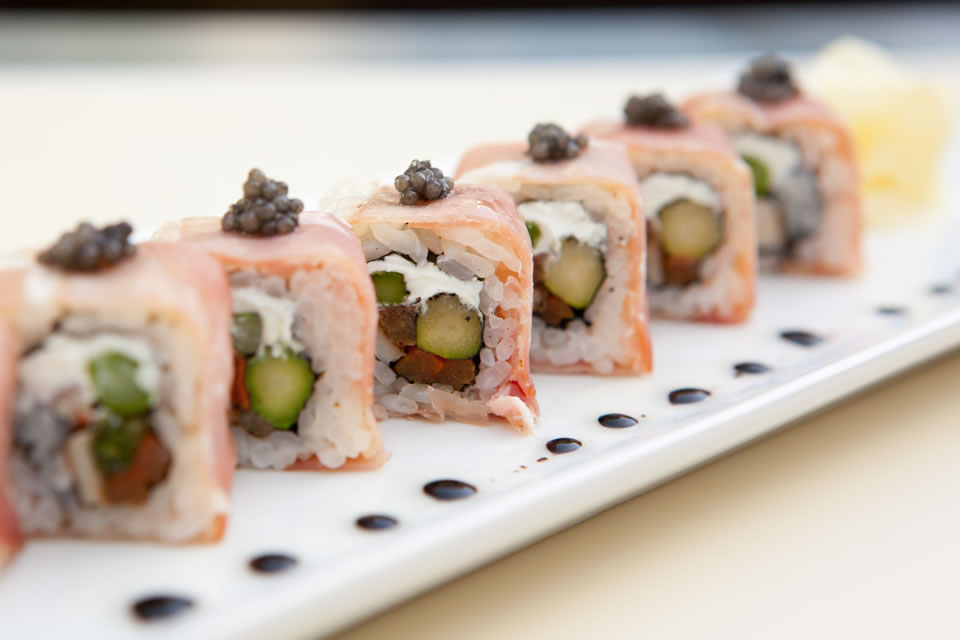
Though Italians will tell you they could easily eat prosciutto as is for an entire meal, in the United States, it is part of the ingredient list for a plethora of main dishes, including pasta, pizza, other meats and seafood, and in breakfast items in lieu of smoked salmon.
In Miami, it’s prepared with a Japanese twist. At Zen Sai, an Asian fusion restaurant in the Essex House Hotel, the prosciutto roll has been on the menu since the opening in July 2012. According to Executive Chef Chris Wong, seasoned sushi rice is spread on seaweed, then layered with goat cheese, crispy shiitake mushrooms, asparagus and thin-sliced bell peppers. The ingredients are rolled together, wrapped with sliced prosciutto, topped with caviar and plated with a garnish of white truffle oil and balsamic vinegar glaze. Combining prosciutto and truffle pays homage to the pigs who help find this treasured fungi in the wild. “It’s a pork-truffle love story,” Wong says.
While some chefs are creative in their usage, it’s more commonly served raw on pizza or added to pasta toward the end of cooking so the flavor isn’t drastically altered. At Coalfire Pizza, the prosciutto combo was so popular that Bonomi took it off the menu. Now it’s offered as an extra topping that customers can add, which they do in droves. Thinly sliced pieces are piled high after the pizza is baked, keeping the ingredient raw.
“We never cook it; if you talk to my relatives, they’ll tell you it’s a sin to cook prosciutto. It’s a delicate and beautiful meat just the way it is,” Bonomi explains, adding that he’s also excited that chefs are using the ingredient in new ways. “I like that people cook it. It’s become fashionable in the last year, and chefs know how to use it. It’s also a great way to get a bacon-like flavor without the smoke.”
Prosciutto is also finding its way into morning meals. Vintage Enoteca incorporates it with eggs in paninis, or as an alternative to smoked salmon on eggs Benedict. Casella goes one step further with his prosciutto puff, which is essentially a beignet with the meat stuffed inside that can be eaten on its own or used as the basis for a sandwich.
Casella also uses it in his all’Amatriciana sauce and Brussels sprouts recipe. “For me, it’s the complex flavor of prosciutto that can make a dish so much better,” Casella says, noting that he also appreciates its raw texture. “But if you use it too much, it can hurt your dish.”
To Delight
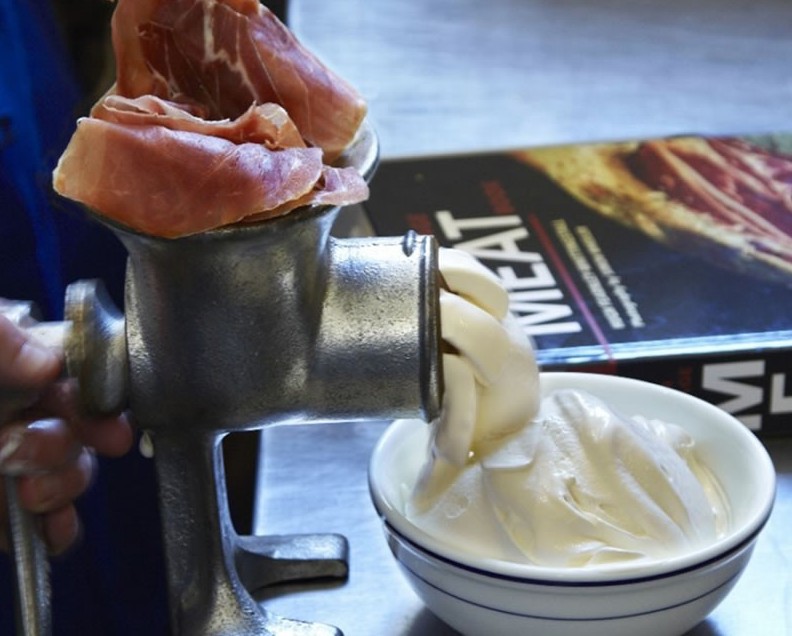
It’s common to find the cured meat as an accompaniment in many dishes, but perhaps nothing is as surprising as the desserts with this savory addition. People have been covering melon with the ham for years—a combination that has found its way into the bottom of cocktails—but several new treats are emerging on the after-dinner scene.
Humphry Slocombe is one of the few places in the country that offers it as an ice cream flavor.According to co-owner Sean Vahey, the idea came about when celebrity chef Chris Cosentino brought in prosciutto bones and asked if the company was interested in trying it out.
“Initially, the perception was most likely that we were trying prosciutto-flavored ice cream for the sake of being weird until people tried it,” Vahey says, adding that the meat’s versatility is one reason for its increased popularity. “[However,] once people tried it, they realized that it made sense and is delicious.” Others certainly agree—lines for his ice cream in San Francisco can stretch for what seem like miles.
Casella is another chef who uses it on the dessert menu, with his brittle that is part of the semifreddo selection, served with a parfait and fruit. The meat is sauteed until crispy, then added to caramelized sugar for a tantalizing taste. Regardless of how much prosciutto is loved, it’s important not to overdo it, especially when it comes to dessert. Casella suggests the best way to use it is by capitalizing on its aroma, like a perfume. And what a pleasant perfume it is.
—Written by Tiffanie Wen

